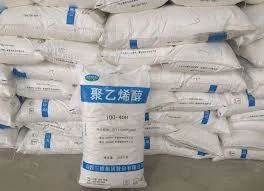Chemicals Used in Paints An Overview
Paint is a vital component in various industries, serving aesthetic and protective purposes in applications ranging from home interiors to industrial machinery. The formulation of paint involves a complex mixture of chemicals that contribute to its desired properties such as color, texture, durability, and drying time. Understanding these chemicals can provide insights into not only paint performance but also safety and environmental considerations.
1. Composition of Paint
Paint primarily consists of four main components pigments, binders, solvents, and additives. Each of these components plays a critical role in the overall function and quality of the paint.
- Pigments These are finely ground particles that provide color and opacity to the paint. Pigments can be either organic or inorganic. Organic pigments are typically brighter and more vibrant, while inorganic pigments tend to be more stable and durable. Common examples include titanium dioxide for opacity and various metal oxides for color.
- Binders Also known as resins, binders are the film-forming agents in paint. They hold the pigment particles together and ensure adhesion to the surface being painted. Different types of binders can affect the texture, gloss, and durability of the paint. Common binders include acrylic, alkyd, and epoxy, each suited to specific applications and environments.
- Solvents Solvents are used to dissolve the binder and adjust the viscosity of the paint for easy application. They evaporate during the drying process, allowing the paint to harden. Water is the primary solvent in water-based paints, while organic solvents are used in oil-based paints. However, many solvents can emit volatile organic compounds (VOCs), which pose environmental and health risks.
- Additives These are additional chemicals included in the paint formulation to enhance certain properties. Additives can serve various purposes, such as improving flow and leveling, increasing mildewcide properties, or enhancing stability. Common additives include surfactants, defoamers, and preservatives.
2. Types of Paints
chemicals used in paints

The choice of chemicals and their proportions can lead to the creation of different types of paints suited for various applications
. Generally, paints can be categorized into two groups water-based and oil-based.- Water-Based Paints These paints use water as a primary solvent and are favored for their low VOC content and ease of cleaning with soap and water. Acrylic paints fall into this category, which are known for their quick drying times and excellent adhesion. Water-based paints are commonly used for interior walls, as they are less likely to yellow and emit fewer harmful fumes.
- Oil-Based Paints With organic solvents such as mineral spirits or turpentine, oil-based paints offer a smoother finish and exceptional durability, making them ideal for high-traffic areas and outdoor applications. However, they have a longer drying time and emit higher levels of VOCs, raising health and environmental concerns.
3. Health and Environmental Concerns
The use of certain chemicals in paints raises significant health and environmental issues. VOCs found in many solvents can contribute to air pollution and have been linked to various health problems, including respiratory issues and headaches. The Environmental Protection Agency (EPA) has established regulations to limit VOC emissions in paints and coatings, encouraging the development of low-VOC and VOC-free alternatives.
Furthermore, heavy metals such as lead and chromium, once common in paint formulations, have been banned or severely restricted due to their toxicity. Consumers are encouraged to look for paints labeled as low VOC or no added heavy metals to ensure safety.
Conclusion
Understanding the chemicals used in paints is essential for selecting the right product for your project and ensuring safety for yourself and the environment. As industries and consumers continue to prioritize eco-friendly solutions, paint manufacturers are innovating to create safer, more sustainable products. By being informed about the components of paint, individuals can make better choices that align with their health and environmental values.




